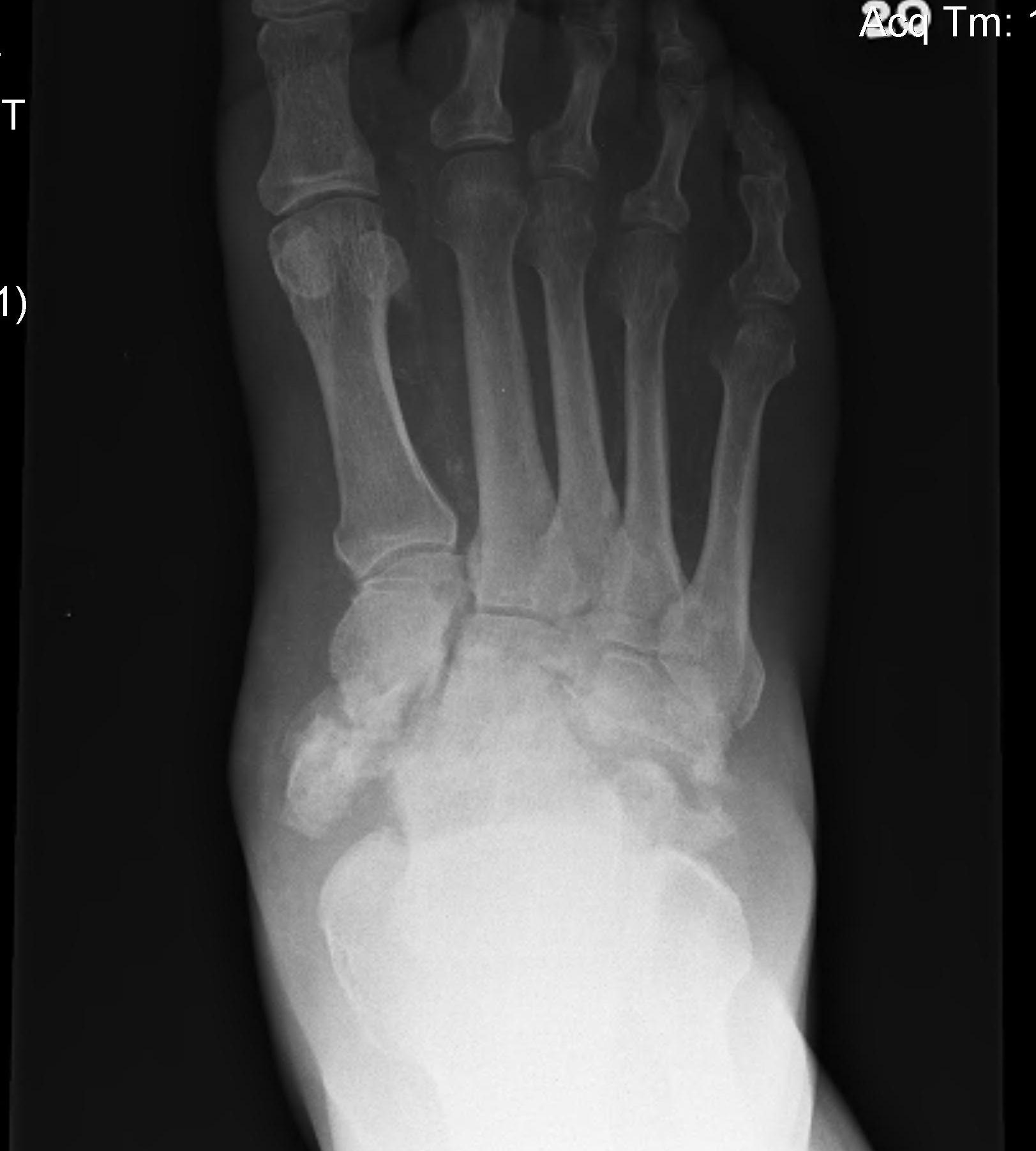
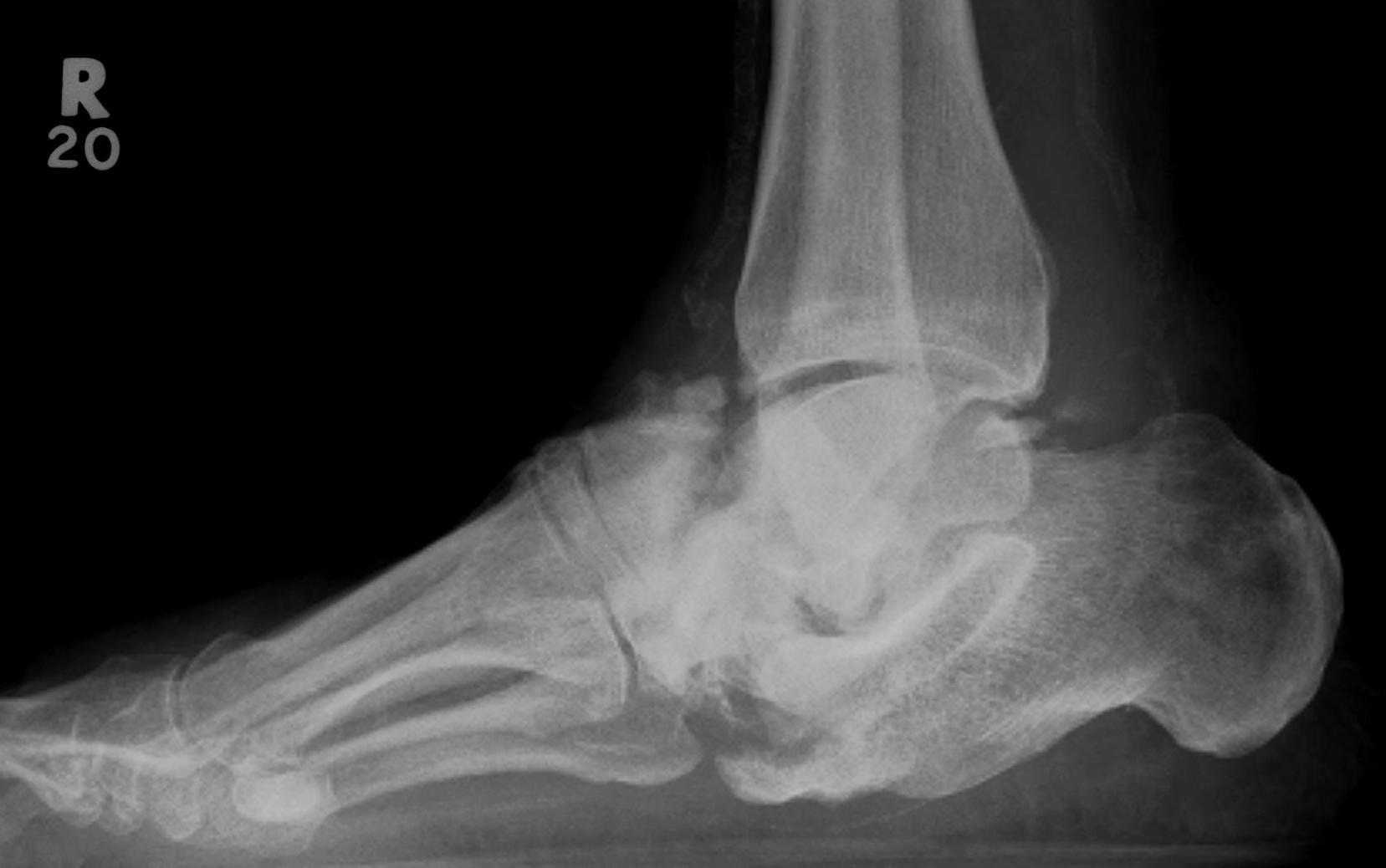
Definition
Neuropathic Arthropathy
Progressive destructive arthropathy 2° to neurological condition
- usually minimal to no trauma
Aetiology
DM
- western world
Leprosy / syphilis
- third world
Other
- polio
- paraplegia
- syringomyelia
Pathophysiology
Likely combination of :
1. Neuro-traumatic theory
- cumulative trauma in insensate foot unrecognised
- results in progressive joint destruction
2. Neurovascular theory
- neurally stimulated vascular reflex
- stimulates bone resorption
Newer theory: due to inflammatory cytokines
(TNF Alpha & IL-1) = stimulates osteoclast resorption
Classification Temporal - Eichenholtz
Sidney N Eichenholtz, American surgeon, 1966
Stage 0
- added by Shibata et al 1990
- clinical signs (swelling/ erythema) precede XRay changes
- NWB during this period may prevent XRay changes
Stage 1 Dissolution
Findings
- acute inflammation (swollen, red, warm)
- DDx infection
- erythema reduces with elevation 10 minutes
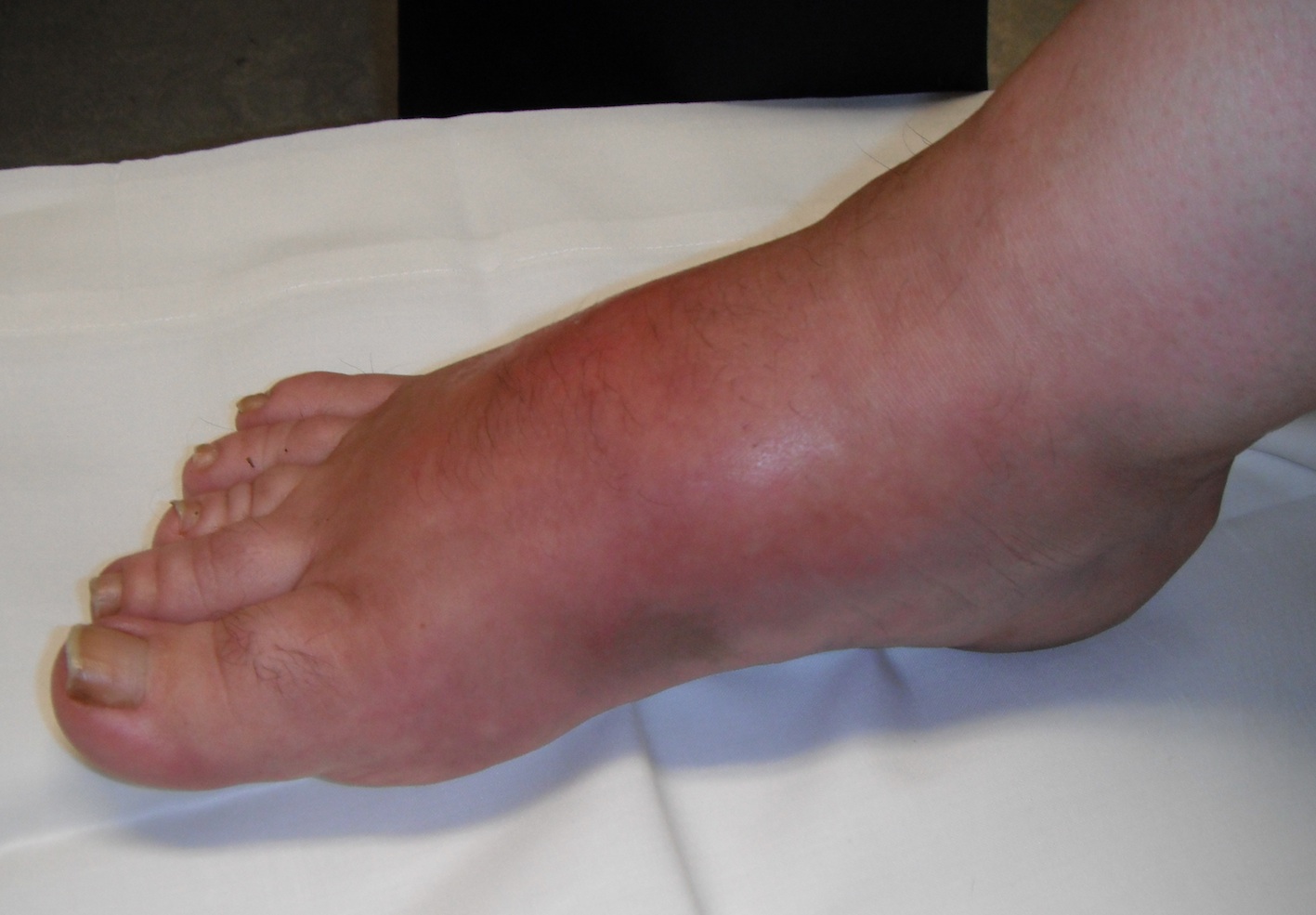

X-ray
- demineralisation of regional bone
- periarticular fragmentation
- joint dislocation
- hyperaemia precedes fragmentation by hours to weeks

Treatment
- TCC remains gold standard
- WBAT ; no evidence that better outcomes with NWB
- applied weekly until clinical progression to stage II
- frequency of application may decrease as progress
Stage 2 Coalescence
Findings
- inflammation decreases / less swelling
- reduced temperature
X-ray
- absorption of osseous debris
- organization and early healing of fracture fragments
- periosteal new bone formation
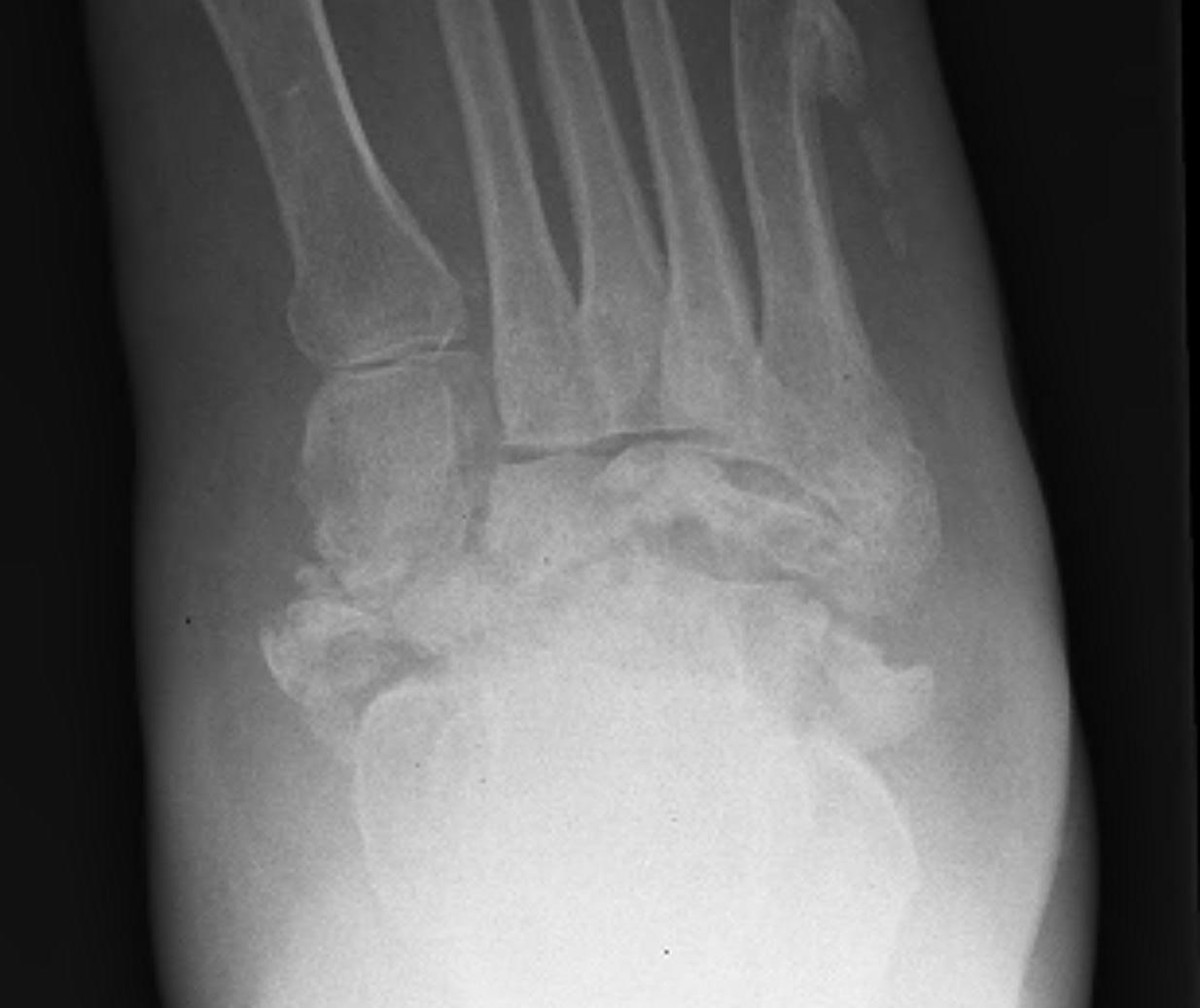
Treatment
- TCC or transition to CROW (Charcot Resistant Orthotic Walker)i.e bivalved AFO
- may need to modify CROW a number of times before stage III
Stage 3 Reconstruction
Findings
- normal temperature
- swelling reduced
- clinically stable
X-ray
- smoothing of edges
- sclerosis, osseous or fibrous ankylosis
- complete bone healing
- resolution of osteopenia
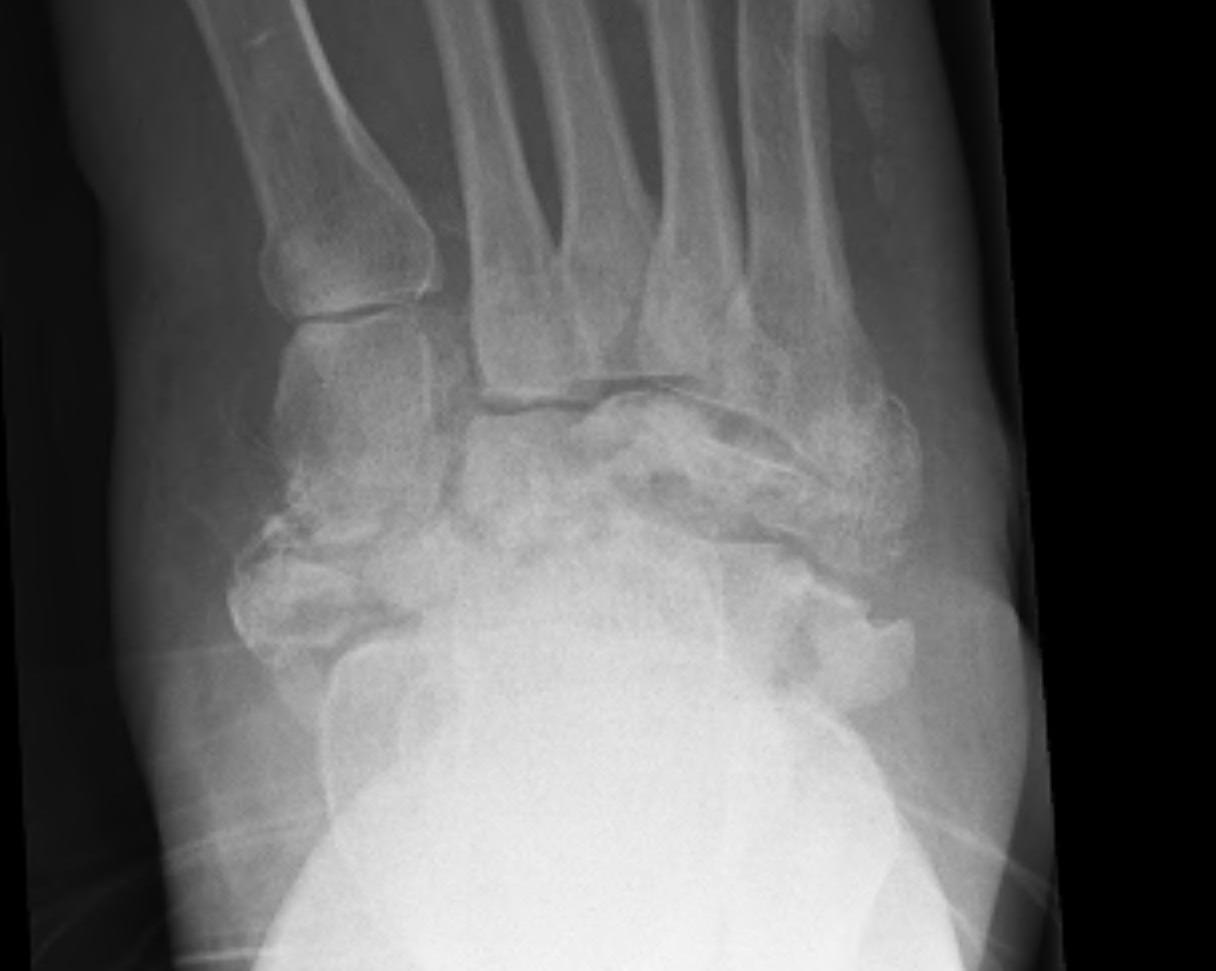
Treatment
- accommodative shoes with custom moulded orthotic
- CROW or AFO if ongoing ankle instability
Px
- 30% will relapse between stages
- 7% risk of BKA without ulcer
- 28% risk of BKA with ulceration
Classification Anatomical - Brodsky
James Brodsky; Orthopaedic F&A Surgeon; Dallas Tx ; 1993
Type 1 Midfoot (60%)
- metatarsocuneiform and naviculocuneiform
- collapse of the medial longitudinal arch with rocker bottom foot
- progress through Eichenholtz stages quicker
- may present stage III with bony prominences & DFU

Type 2 - Hindfoot (30%)
- any / all subtalar joint i.e TNJ; subtalar; calcaneocuboid
- more instability than type 1
- require longer periods immobilisation
- varus or valgus
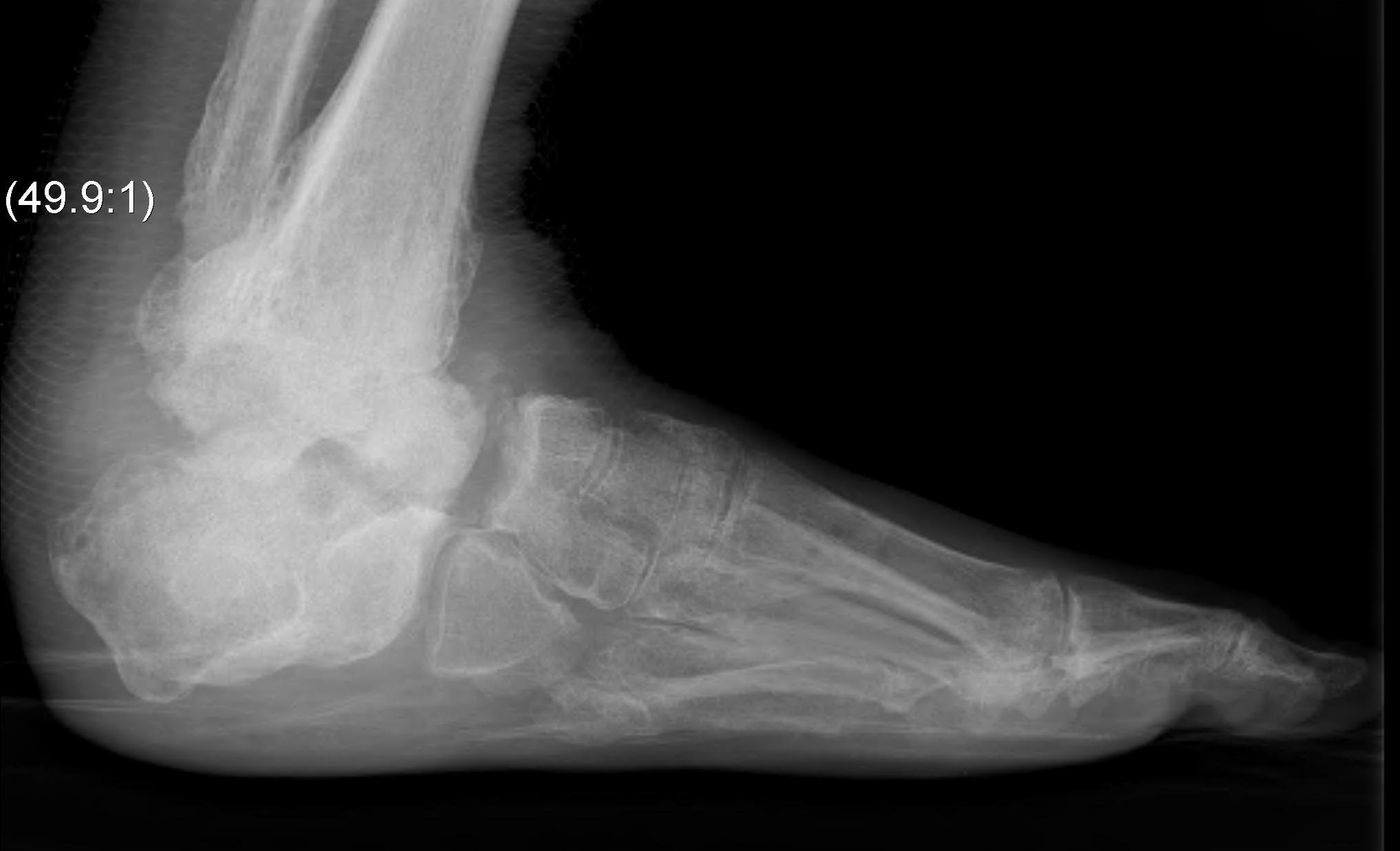
Type 3 (10%)
3a
- tibiotalar joint
- usually post ankle fracture
- most unstable pattern
3b
- pathologic fracture calcaneal tubercle
- weak push-off and ulceration
Investigation
DDx infection
- MRI
- combination labelled WCC + Bone Scan if MRI CI
Management
Goal
Stable plantigrade foot that is shoe-able or braceable
Few require operative surgery
- control with casts and braces
Indications For Surgery
1. Severe deformity unable to brace
2. Marked instability (usually type II or IIIa)
3. Ulcers
- common type 1
- aim to try and heal ulcer first
- may be caused by fixed bony deformity i.e. midfoot collapse
4. Soft tissues at risk
Contra-Indications
Uncontrolled diabetes
PVD
Medically unwell
Stage 1 disease
Goals of Operative Management
Restore alignment & stability so brace &/or shoe can be worn
- prevent alternative which is amputation
Timing of Surgery
Operating in stage 1 or 2 remains very controversial
Correct deformity in resolution / consolidation stage III
- after cast / brace, shoe failed
Acute Fractures
Issue
- is it charcot or non charcot?
1. Likely Charcot
Patient
- fracture a week or 2 old / red & swollen
- peripheral neuropathy & displaced fracture
- mimimal trauma
Eichenholtz I
- treat non-operatively
2. Non Charcot
Truly acute fracture
- reasonable trauma
- patient has peripheral neuropathy / DM
- treat as per usual, but accept higher complication rate
Management
- ORIF early before acute (dissolution) phase sets in
- if delayed be wary of ORIF as bone stock very poor
- need very strong and augmented ORIF
- must warn of risk of Charcot in acute fracture
- with peripheral neuropathy double period of immobilisation
- NWB 3/12 then further 3-4 month in TCC
Surgical procedures
1. Midfoot ostectomy
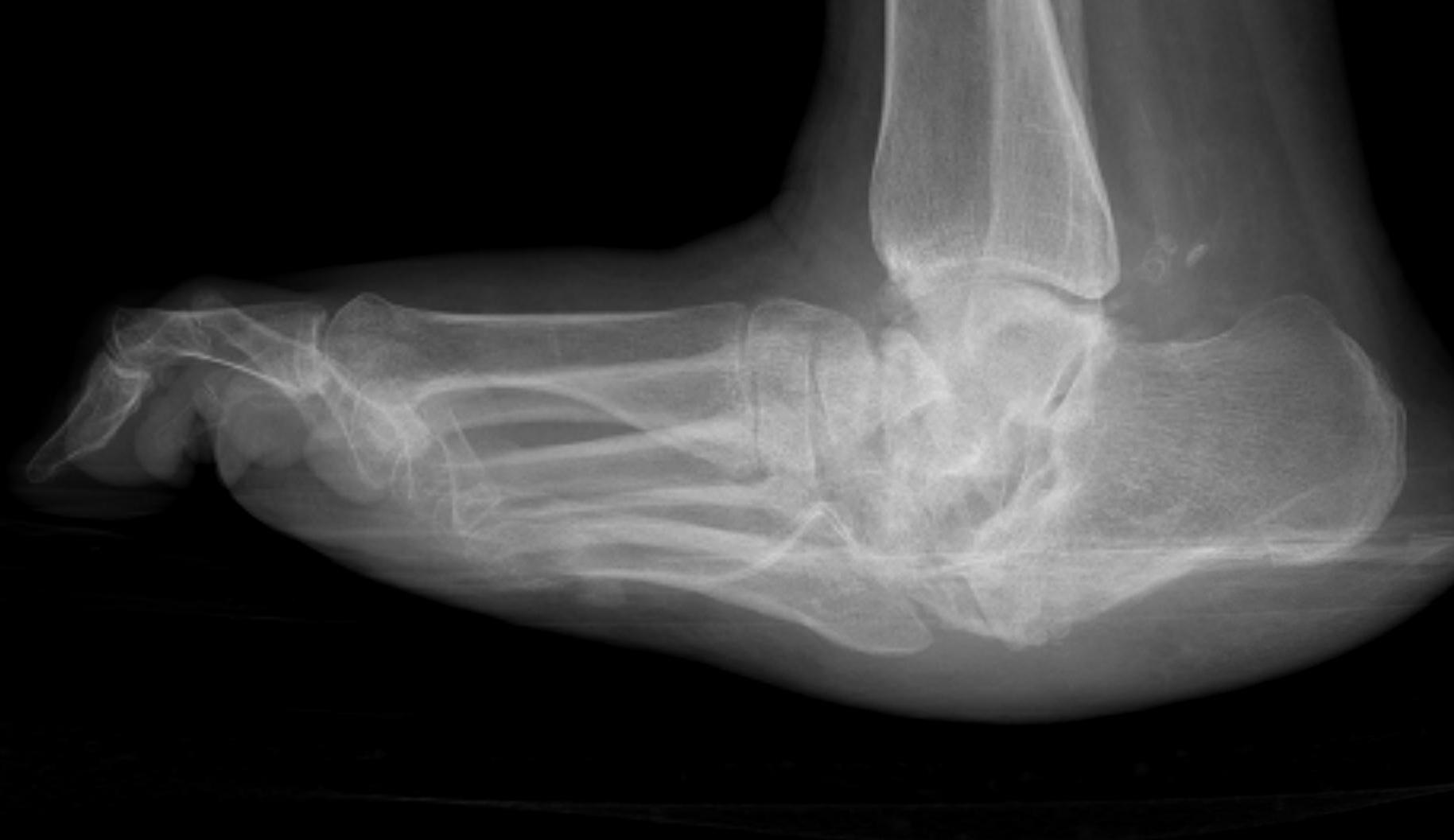
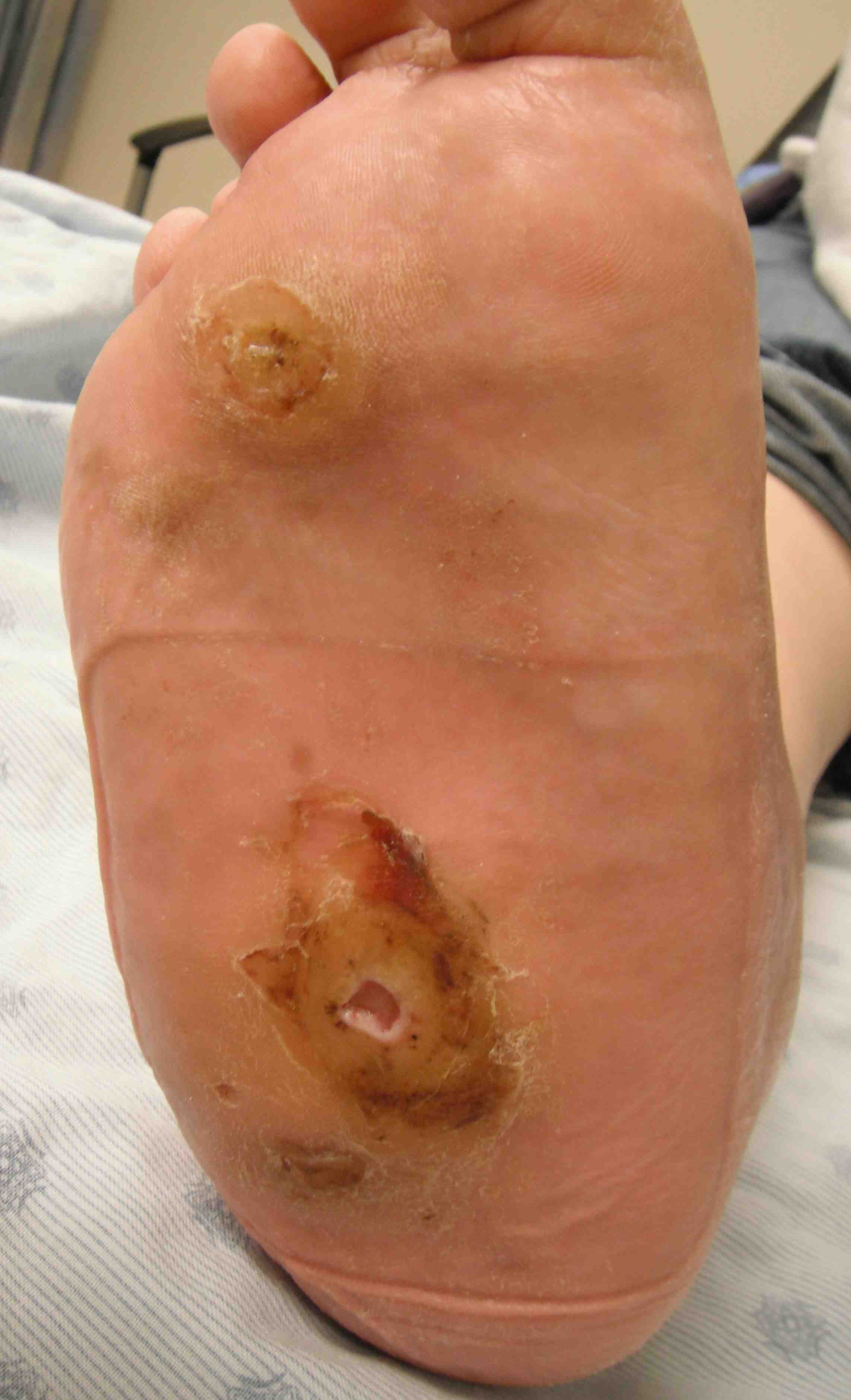
Midfoot most common site for neuropathic destruction
- mid foot collapse
- apex of rocker-bottom common site for recurrent ulceration
Technique Ostectomy
1. Attempt to heal ulcer first
- TCC
- debridement +/- IV ABs if OM
2. Remove bony prominence causing ulcer
- medial or lateral incision
- avoid areas of ulceration
- full thickness soft tissue dissection to expose exostosis
- remove with osteotome / saw
- smooth edges with rasp
- haemostasis
- closure over drain; compressive dressing
- postoperative TCC for 6/52
2. Hindfoot Realignment & Arthrodesis
Indications
- hindfoot Charcot not amenable to bracing
- severe deformity or instability following failed bracing
- amputation is only alternative
Amputation v Arthrodesis
May develop bilateral issues
- try to avoid bilateral amputations
Contraindications to Arthrodesis
1. Disease Factors
- Active infection (consider staged)
- Stage I Eichenholtz
- Insufficient soft tissue coverage
- Insufficient bone stock
2. Patient Factors
- Uncontrolled DM or malnutrition
- Nonreconstructable PVD
- Non-compliant
Technique
Preoperative
- cast / TCC till Stage III
- optimise HBA1c and nutrition
Intraoperative
- longitudinal incisions with full thickness flaps under no tension
- meticulous soft tissue handling
- resect bone to correct deformity
- strongest fixation device possible ; often augmented
- if using hindfoot nail ensure >200mm length
(risk of tibial stress fractures with shorter nail)
- often need percutaneous T Achilles lengthening
- alternative: fine wire fixation if active infection
Postoperative
- TCC - 3/12 NWB ; 1/12 PWB; 1/12 WBAT
- Lifelong AFO
- Periodic 6/12 follow-up
Results
- Lowery FAI 2012 - 76% bony fusion; 22% fibrous ; 1.2% amputation
- fibrous union can still result in good function
